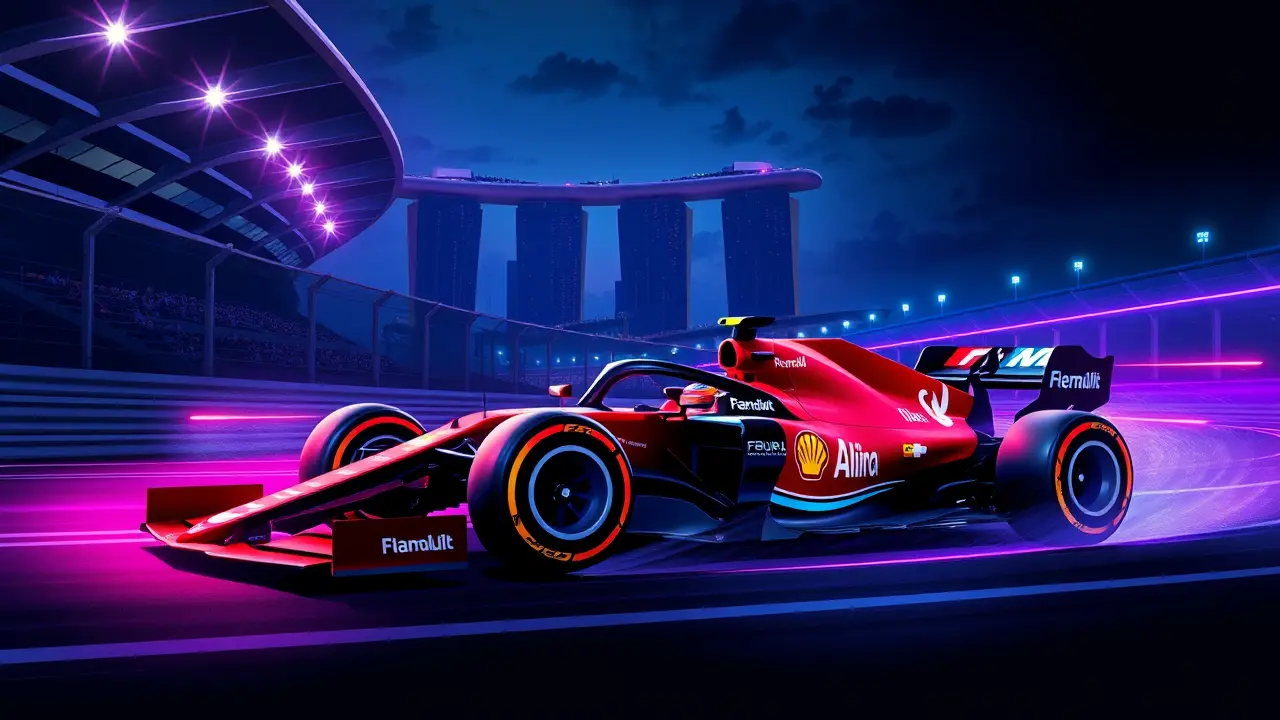Sam Bird: Hamilton was right to continue without brakes, understands Alonso's anger.
In the high-stakes theatre of Formula 1, where milliseconds dictate glory and mechanical failure spells disaster, the Singapore Grand Prix delivered a drama that transcended mere lap times, pitting the calculated survival instinct of a seven-time world champion against the raw, unfiltered fury of a seasoned rival. Lewis Hamilton, piloting his Ferrari with brakes teetering on the edge of catastrophic failure in the closing laps, made the contentious decision to continue, cutting corners to manage his car's terminal condition and ultimately securing a finish, a move that ignited the fiery temper of Fernando Alonso in the pursuing Aston Martin.This was not merely a dispute over track limits; it was a profound clash of philosophies played out at 200 miles per hour under the Marina Bay floodlights, a scenario where the cold calculus of points and positions collided head-on with the sacred, unwritten code of racing ethics. Sam Bird, a seasoned campaigner in the all-electric battleground of Formula E, immediately threw his support behind Hamilton's controversial call, framing it with the pragmatic logic of a driver who understands the razor's edge between retirement and result.'The question is this: do you park a multi-million-pound car on the brink of the finish, surrendering every point, or do you wrestle the beast home and let the stewards adjudicate?' Bird articulated, his perspective echoing in the paddock's post-race debates. 'If I were one lap from the checkered flag, I'd do exactly what Lewis did.You cross the line, you take the finish, and you accept the potential consequences. It was the right call for the championship, for the team, for the result.But let's be absolutely clear—I also completely understand Fernando's rage. When you're hunting, when you see a competitor gaining an advantage by transgressing the track's boundaries, especially under such dangerous circumstances as failing brakes, it feels like a violation of the sport's core competitive principles.' This incident is merely the latest chapter in the long and storied, often fractious, rivalry between Hamilton and Alonso, a relationship that has simmered since their tumultuous year as teammates at McLaren in 2007. Alonso's anger in Singapore was not just about a single corner cut; it was the eruption of a deep-seated competitive tension, a flashback to past battles where respect and resentment are forever intertwined.Hamilton’s subsequent response, quipping with references to a British sitcom, only added a layer of psychological gamesmanship, demonstrating the mental warfare that is as critical in F1 as aerodynamic downforce. To fully grasp the gravity of Hamilton's decision, one must consider the immense physical and mental fortitude required to pilot an F1 car with compromised brakes.The braking system is not just a component; it is the primary interface between driver and machine, the tool that allows for the late-braking heroics into tight corners like Singapore's Turn 7. As temperatures soar beyond their operational window, braking efficiency plummets, pedal feel becomes spongy and unpredictable, and the risk of a complete brake-by-wire system failure becomes a terrifying reality.Hamilton wasn't just driving slowly; he was engaged in a high-speed crisis management exercise, meticulously balancing throttle application, energy recovery, and minimal braking to prevent a total meltdown that could have ended not just his race, but potentially caused a safety car or red flag, altering the outcome for the entire field. From a strategic standpoint, the Ferrari pit wall was faced with a nightmare scenario.Do they order their star driver to retire the car, saving the engine and chassis for future races but accepting a double zero? Or do they trust his unparalleled racecraft to bring the wounded machine home, banking on the stewards to show leniency for a clear mechanical issue? In the modern era of F1, where every single point is fought over with ferocious intensity in both the drivers' and constructors' championships, the latter is increasingly the only logical choice. This pragmatism, however, often clashes with the purist's view of motor racing, where the machine must be fully functional to earn its result.Historically, the FIA stewards have often shown sympathy for drivers nursing crippled cars to the finish, with precedents ranging from reduced penalties to mere reprimands, especially when the alternative—a stationary car in a dangerous position—presents a greater safety risk. The broader conversation this sparks is about the very nature of rules and safety in a sport defined by danger.Is it more dangerous for a driver to slowly navigate his way to the line with failing brakes, clearly off the racing pace, or to suddenly park the car on a blind corner, triggering a potential safety car scramble? There is no easy answer, and this ambiguity is what fuels such passionate debate. Alonso’s perspective is equally valid from the cockpit of a pursuer; his race was fundamentally altered by a competitor who was, in essence, operating outside the normal performance envelope due to a fault, gaining an advantage by using runoff areas as a necessary crutch.This is the essence of elite sport: a perpetual tension between the letter of the law and the spirit of competition, between individual survival and collective fairness. The Singapore incident, dissected by pundits and fans alike, will undoubtedly be a reference point in future drivers' briefings and perhaps even influence future regulatory clarifications. For now, the verdict from a fellow racer like Sam Bird carries significant weight, highlighting a universal truth in the paddock: while you must sometimes make decisions that infuriate your rivals, you will almost always understand the source of their fury, because in the heat of the moment, on the other side of the equation, you would likely feel exactly the same.
It’s quiet here...Start the conversation by leaving the first comment.
© 2025 Outpoll Service LTD. All rights reserved.
